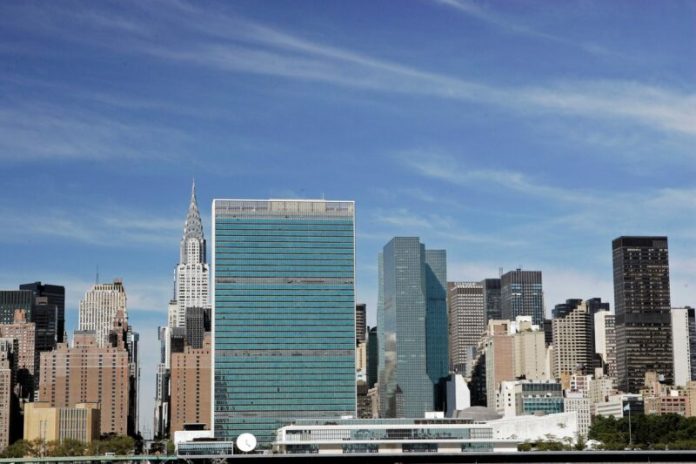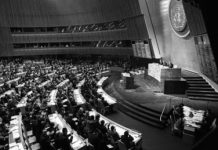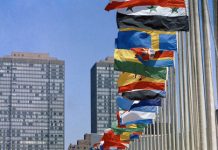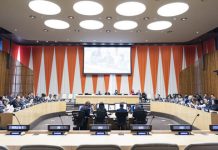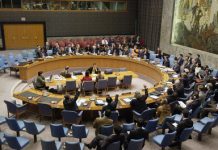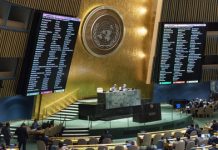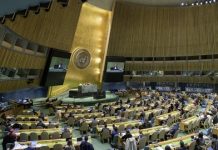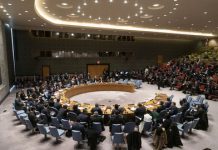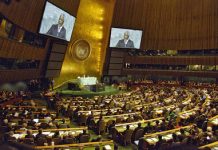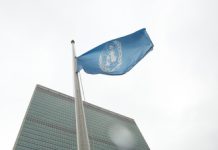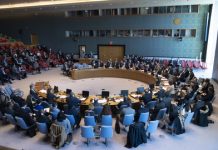One of the UN’s longest-standing peacekeeping missions – the UN Disengagement Observer Force, known by its acronym UNDOF – began more than a half century ago when the 1973 Middle East crisis erupted.
The Agreement on Disengagement between Israeli and Syrian forces was concluded which provided for an area of separation and for two equal zones of limited forces and armaments on both sides of the area. UNDOF was established to supervise its implementation.
Here’s what you need to know:
Forging peace to end a crisis
On the heels of the Israeli-Egyptian war in 1973, the situation in the Israel-Syria sector became increasingly unstable in March 1974 as clashes intensified.
UNDOF was established in late May 1974 and by 3 June, the Secretary-General had appointed an interim commander of UNDOF who arrived in Damascus, Syria’s capital, that very day.
The mission operates with the same mandate today.
A peacekeeper greets the students of the Faouar School in Syria. (file)
What does UNDOF do?
UNDOF’s mandate remains largely unchanged since 1974:
- Maintaining the ceasefire between Israel and Syria
- Supervising the disengagement of Israeli and Syrian forces
- Supervising the areas of separation and limitation, as provided in the May 1974 Agreement on Disengagement.
Every six months, the Security Council reviews and has extended the force’s mandate, which is due to expire on 30 June 2025.
UNDOF has two base camps. Its headquarters at Camp Faouar handles logistics and the force operates patrols by day and night, intervening whenever any military personnel enters or try to operate in the area of separation.
The force also addresses mine and explosive remnant of war clearance and has instituted a security and maintenance programme in the area of separation to identify and mark all minefields.
UNDOF is one of three UN peacekeeping missions in the region, charged with monitoring ceasefires and peace agreements. The other two are the UN Truce Supervision Organization (UNTSO), established in 1948, and the UN Interim Forces in Lebanon (UNIFIL), which has been operational since 1978.
Members of the UNDOF Austrian Battalion Ski Patrol on Mount Hermon in 1975. (file)
What’s the area of separation?
The area of separation is a demilitarised zone and measures approximately 80 km long, varying in width from 10 km in the centre to less than one km in the extreme south, with hilly terrain dominated in the north by Mount Hermon.
The highest permanently staffed UN position, it sits at an altitude of 2,814 metres, where it often snows and peacekeepers conduct patrols thanks to specialised winter season equipment.
The area is inhabited and has historically been policed by the Syrian authorities. No military forces other than UNDOF are permitted to operate inside of this area.
There is also an area of limitation on both sides, where limits are placed on the number and types of military forces and equipment allowed by the parties.
UNDOF monitors these restrictions through fortnightly inspections of the military positions of the Israel Defense Forces (IDF) and the Syrian security forces carried out by the Observer Group Golan, comprised of military observers from UNTSO.
Check out UNDOF’s latest deployment map here.
UNDOF officers patrol the Golan Heights in 1974. (file)
Main challenges in the current Middle East crisis
Over the years, UNDOF has recorded ceasefire violations and worked with Israeli and Syrian authorities to resolve them.
As tensions rose last year during the war in Gaza, a missile killed 12 people in the Golan and recent heightened tensions in the area of separation emerged with Israel Defense Forces (IDF) moving into the area as Syria’s new de facto authorities seized power in early December.
UNDOF peacekeepers, supported by UNTSO observers, remain at their pre-December 2024 positions and continue key tasks such as monitoring and patrolling the ceasefire line, according to UNDOF interim head Major General Patrick Gauchat, who briefed the Security Council in mid-January.
Residents of the Golan have also expressed concerns to UNDOF, calling for the IDF to leave their villages amid reports of searches and arrests of their relatives. The IDF’s presence and roadblocks have also severely impacted UNDOF’s operational capacity, reducing its daily vehicle convoys and compromising its freedom of movement.
An UNDOF observation post in the Golan Heights, Syria. (file)
Adapting to new realities
In the face of these current operational challenges, the mission has adapted its approach.
Right now, it has increased weekly patrols from 10 to 40 and addressed such urgent safety concerns as the neutralisation of unexploded ordnance in public areas.
Meanwhile, efforts are underway to establish stable communication channels with the de facto authorities, acting mission chief Mr. Gauchat explained.
But, concerns remain.
“It is imperative that the UN peacekeepers are allowed to carry out their mandated tasks without obstruction,” Mr. Gauchat told the 15-member Security Council on 17 January, urging all parties to maintain the ceasefire and respect the terms of the 1974 agreement. “We count on the continued support of Member States to return to full mandate implementation.”
Can UNDOF use force?
Yes. UNDOF peacekeepers are authorised to use force in self-defence or to defend UN personnel, facilities and equipment.
UNDOF operates under Chapter VI of the UN Charter, which emphasises monitoring, observation and facilitating the implementation of peace agreements.
Find out more about UNDOF here.
Source of original article: United Nations (news.un.org). Photo credit: UN. The content of this article does not necessarily reflect the views or opinion of Global Diaspora News (www.globaldiasporanews.net).
To submit your press release: (https://www.globaldiasporanews.com/pr).
To advertise on Global Diaspora News: (www.globaldiasporanews.com/ads).
Sign up to Global Diaspora News newsletter (https://www.globaldiasporanews.com/newsletter/) to start receiving updates and opportunities directly in your email inbox for free.


